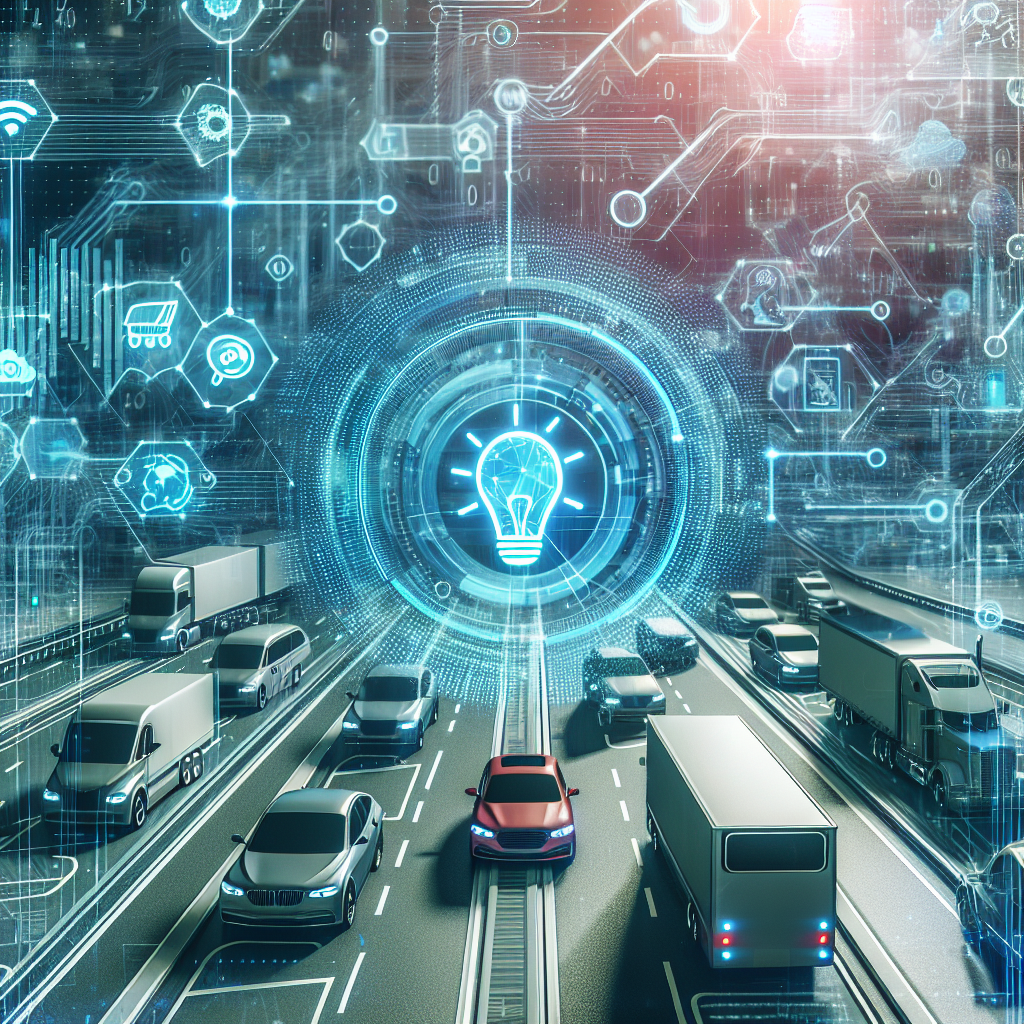Transportation is a critical aspect of modern society, connecting people and goods to different parts of the world. With the rapid advancements in technology, the transportation industry has also seen significant growth and transformation. One of the key technologies that have revolutionized the transportation sector is artificial intelligence (AI) driven predictive analytics. This innovative technology has the potential to bring numerous benefits to the transportation industry, ranging from improved efficiency to enhanced safety. In this article, we will explore the benefits of AI-driven predictive analytics in transportation and how it is shaping the future of the industry.
Predictive analytics is a branch of advanced analytics that uses data, statistical algorithms, and machine learning techniques to identify the likelihood of future outcomes based on historical data. When combined with AI, predictive analytics becomes even more powerful, as AI algorithms can continuously learn from new data and improve their predictions over time. In the transportation sector, AI-driven predictive analytics can be used to forecast various aspects of transportation operations, such as traffic patterns, maintenance needs, and demand for services.
One of the key benefits of AI-driven predictive analytics in transportation is improved efficiency. By analyzing historical data and real-time information, AI algorithms can predict traffic patterns and congestion, allowing transportation companies to optimize their routes and schedules. This can help reduce travel times, fuel consumption, and overall costs. For example, AI-driven predictive analytics can help public transportation agencies optimize bus schedules based on demand patterns, leading to more efficient service and reduced waiting times for passengers.
Another benefit of AI-driven predictive analytics in transportation is enhanced safety. By analyzing data on road conditions, weather patterns, and driver behavior, AI algorithms can predict potential safety hazards and alert drivers or transportation companies in advance. For example, AI-powered dash cams in vehicles can analyze driver behavior in real-time and alert drivers if they are exhibiting risky driving habits, such as speeding or distracted driving. This can help prevent accidents and save lives on the road.
Furthermore, AI-driven predictive analytics can also help transportation companies improve their maintenance practices. By analyzing data on vehicle performance, usage patterns, and environmental conditions, AI algorithms can predict when a vehicle or piece of equipment is likely to require maintenance or repairs. This proactive approach to maintenance can help prevent breakdowns, reduce downtime, and extend the lifespan of assets. For example, airlines can use AI-driven predictive analytics to predict when an aircraft engine is likely to fail and schedule maintenance before a costly breakdown occurs.
In addition to efficiency, safety, and maintenance benefits, AI-driven predictive analytics can also help transportation companies enhance the customer experience. By analyzing data on customer preferences, behavior, and feedback, AI algorithms can personalize services and offerings to meet the unique needs of each customer. For example, ride-sharing companies can use AI-driven predictive analytics to match passengers with drivers based on their location, preferences, and past interactions, leading to a more seamless and enjoyable experience for both parties.
Overall, the benefits of AI-driven predictive analytics in transportation are vast and have the potential to transform the industry in significant ways. From improving efficiency and safety to enhancing maintenance practices and customer experience, AI-driven predictive analytics is revolutionizing the way transportation companies operate and deliver services. As technology continues to advance, we can expect to see even more innovative applications of AI-driven predictive analytics in the transportation sector, further improving the way we move people and goods from one place to another.
FAQs:
1. What is the difference between predictive analytics and AI-driven predictive analytics in transportation?
Predictive analytics uses data and statistical algorithms to forecast future outcomes based on historical data, while AI-driven predictive analytics combines predictive analytics with artificial intelligence algorithms that can continuously learn from new data and improve their predictions over time. In the transportation sector, AI-driven predictive analytics is more powerful and dynamic than traditional predictive analytics, as AI algorithms can adapt to changing conditions and make more accurate predictions.
2. How can transportation companies benefit from AI-driven predictive analytics?
Transportation companies can benefit from AI-driven predictive analytics in various ways, including improved efficiency, enhanced safety, better maintenance practices, and personalized customer experiences. By analyzing data and using AI algorithms, transportation companies can optimize their operations, prevent accidents, reduce downtime, and deliver more tailored services to their customers.
3. What are some real-world examples of AI-driven predictive analytics in transportation?
One real-world example of AI-driven predictive analytics in transportation is the use of predictive maintenance in the airline industry. Airlines can use AI algorithms to analyze data on aircraft performance and predict when an engine or other critical component is likely to fail, allowing them to schedule maintenance before a costly breakdown occurs. Another example is the use of AI-powered dash cams in vehicles to analyze driver behavior and predict potential safety hazards on the road, helping to prevent accidents and save lives.
4. How can transportation companies implement AI-driven predictive analytics in their operations?
To implement AI-driven predictive analytics in their operations, transportation companies should first gather and clean relevant data from various sources, such as sensors, GPS devices, and customer feedback. They should then use AI algorithms to analyze this data and generate insights and predictions. Finally, transportation companies should integrate these predictions into their decision-making processes and operational workflows to realize the benefits of AI-driven predictive analytics.
5. What are the challenges of implementing AI-driven predictive analytics in transportation?
Some of the challenges of implementing AI-driven predictive analytics in transportation include the complexity of data integration, the need for specialized skills and expertise in AI and data science, and concerns about data privacy and security. Transportation companies may also face resistance from employees or customers who are not familiar with AI technology or are wary of its implications. Despite these challenges, the benefits of AI-driven predictive analytics in transportation far outweigh the potential obstacles, making it a worthwhile investment for companies looking to improve their operations and services.

